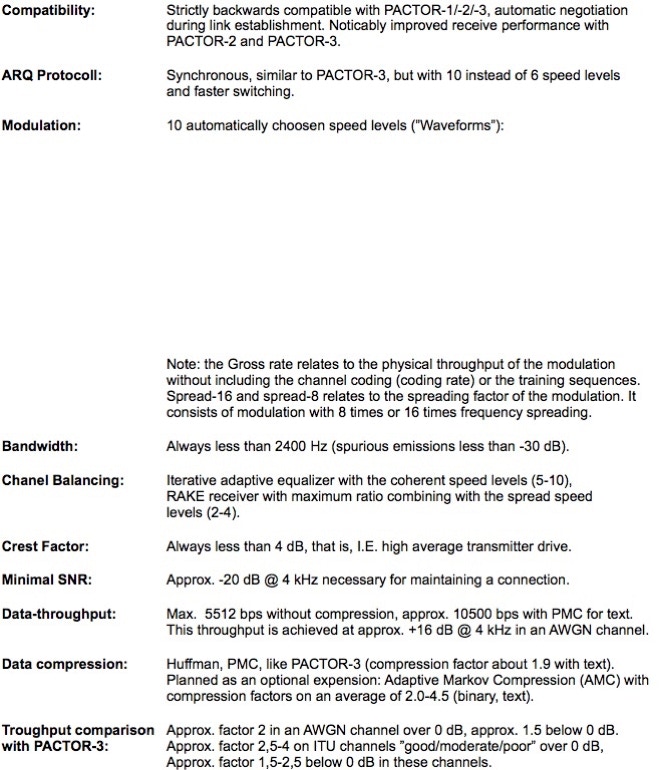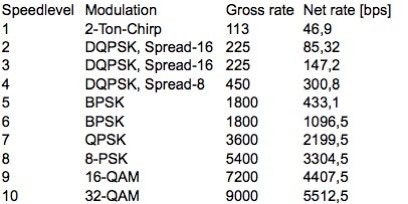


PACTOR-4
The high speed protocol PACTOR-4 (P4), is THE HF-Data protocol of the 4th generation, using the most modern methods of adaptive channel equalization, channel coding and source compression.
The resulting highly adaptive ARQ mode adjusts itself almost perfectly to the varying conditions of the short-wave channel. Due to the narrowly synchronized ARQ grid (like with PACTOR-3, but with more speed levels and a better switching algorithm), it rapidly adapts to changes in channel conditions.
The channel equalizer operates using an iterative method, and compensates for distortion caused by multi-path propagation up to a delay spread of 8.8 ms. Signal echoes are resolved, and constructively superimposed. Even high Doppler spreads (e.g. ITU ”poor channel”) can be taken and equalized. In comparison to OFDM methods, selective fading does not produce an irreducible noise floor, so that high rate channel coding with relatively little ”overhead” can be used.
PACTOR-4 has proven to be equally suitable for channels with high signal to noise ratios and heavy multi-path propagation, as well as for those with a very low SNR. Narrow band interference is effectively removed before the adaptive equalizer using a newly developed, minimum phase shift ”real” N-times auto-notch filter. PACTOR-4 reaches a higher data throughput than PACTOR-3 over the entire working range from -20 to +25 dB @ 4 KHz. The throughput difference is more noticeable on typical short-wave channels than on AWGN channels, and lies, on average, about a factor 2 compared to that of PACTOR-3.
At the lowest speed level, PACTOR-4 uses a newly developed 2-tone chirp modem. The chirp mode is robust against narrow band and part-channel interference, as well as against selective fading. Together with a much improved method of memory-ARQ it allows a link to continue up to a SNR of -20 dB @ 4 kHz.
Special importance was given during the development of PACTOR-4 that this could be used without problem on industry standard transceivers with a 2.4 kHz IF bandwidth (”amateur radio transceiver”). Due to the adaptive equalizer, the form of the IF filter curve (as compared against OFDM, PACTOR-3) is non critical. PACTOR-4 requires only slightly more SNR in order to equalize even ”heavily bent” IF filter curves.

Highlights of PACTOR-4:
- 10500/5500 bps net (PMC/uncompressed)
- At least twice as fast as PACTOR-3 the same power and bandwidth!
- Backwards compatible with PACTOR-1/-2/-3
- 2400 Hz bandwidth
- Highly adaptive (10 speed levels)
- High interference immunity (up to -20 dB @ 3 kHz)
- 6 auto-notches
- Adaptive equalizer
Specification Table:





The Logo

The new Ouroboros logo is not only a symbol for globe circling HF communication, it also symbolizes the many iterative methods used, without which PACTOR-4 could not approach the Shannon limit so closely.

SCS
Spezielle Communications Systeme GmbH & Co. KG
Roentgenstr. 36
D-63454 Hanau, GERMANY
